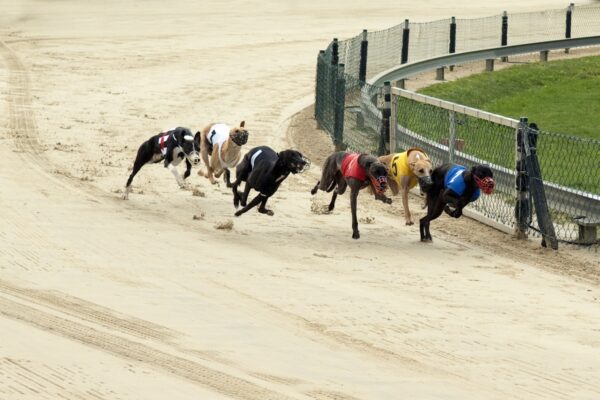
Greyhound racing is not the best known of sports in the UK. It doesn’t have the mass appeal of football, tennis, rugby, or cricket. However, there’s no doubting the passion and commitment that greyhound fans, and trainers, have for their sport. Greyhound racing has a long history, having been part of the British sporting scene for almost a century.
The sport was brought across the Atlantic, and originally the races attracted the middle class, keen to get a look at a new American import. However, that interest proved fleeting and,within a few years, greyhound racing found its support in the working class.
The urban location of the tracks and the evening times for races both made the sport much more appealing than others, such as horse racing. Fairly quickly, greyhound racing grew and interest in the sport peaked in the years around the second world war.
It’s easy to see how it became so popular. Watching greyhounds at the track has always been a thrilling way to spend time. The sense of tension builds throughout the evening, as the dogs take their places, and punters take a look at the greyhound betting. That feeling is quickly replaced with sheer excitement as the hounds burst out of the traps and jostle for position while they make their way round the track, not giving an inch until they make the finish.
It’s an electrifying spectacle that has to be seen to be believed. That’s part of the thrill of the sport but, unfortunately, it’s also held it back. Greyhound racing has plateaued since the middle of the 20th century, as audience numbers have fallen away.
Other sports have moved forward with technology, and reinvented themselves for the modern era, with the change in football from the dark days of the 1980s to the sleek showbiz style of Premier League football being a perfect example. Greyhound racing, however, has failed to evolve with the times.
Although the sport is televised, it’s struggled to reinvent itself, and some see greyhound racing as a dying sport. The sport has found it difficult to appeal to the younger generation, and there are concerns that greyhound racing is struggling for a long termfuture.
That being said, it’s hard to watch this year’s excellent English Greyhound Derby final, a thrilling victory for Romeo Magico, and think that this sport cannot find a newer audience. Greyhound racing is being televised and streamed with increasing regularity, and the money on offer is as good as ever.
According to experts at bestpayoutonlineslots.com, the Greyhound Derby is a good example of this, the prize money has increased in recent years, with the winner now rewarded with £175,000. After a period of turmoil, due to financial problems and the Covid-19 pandemic, the race can now go ahead at Towcester racecourse on a regular basis.
While the Derby isn’t the only race in the sport, it is the biggest greyhound race held in Britain, and is likely integral to the sport’s future. If greyhound racing can attract viewers to the biggest events, such as the Derby, then the hope is that some of those viewers will take a further interest in the sport, and attend their local races.
Just as greyhound racing captured the attention of the public in the 1920s and ‘30s, it will have to repackage itself a century later as a novel sport, offering something different to the rest.
